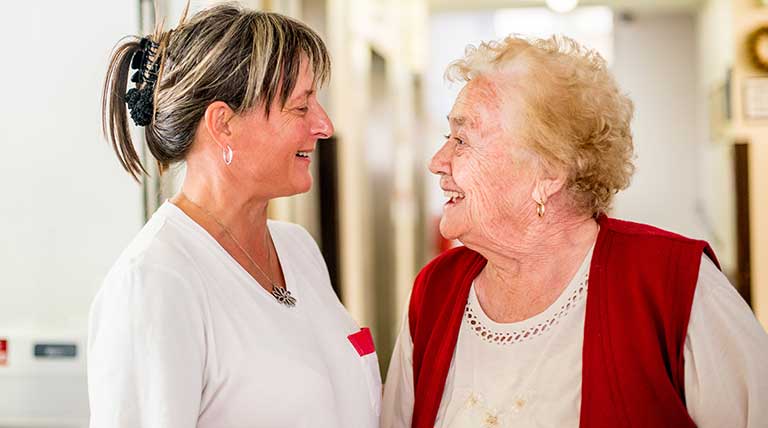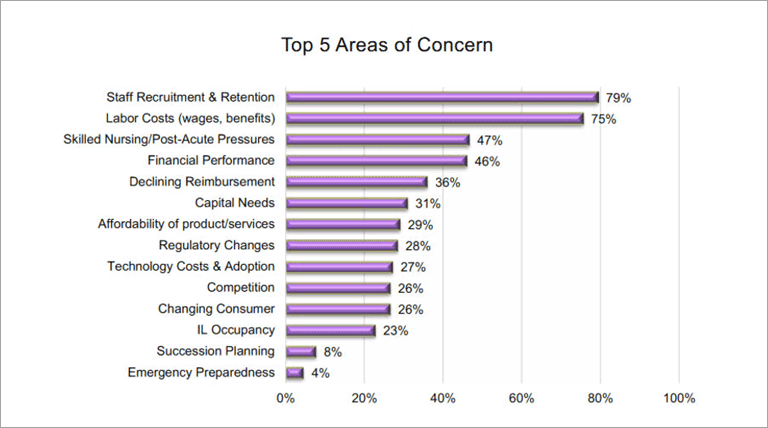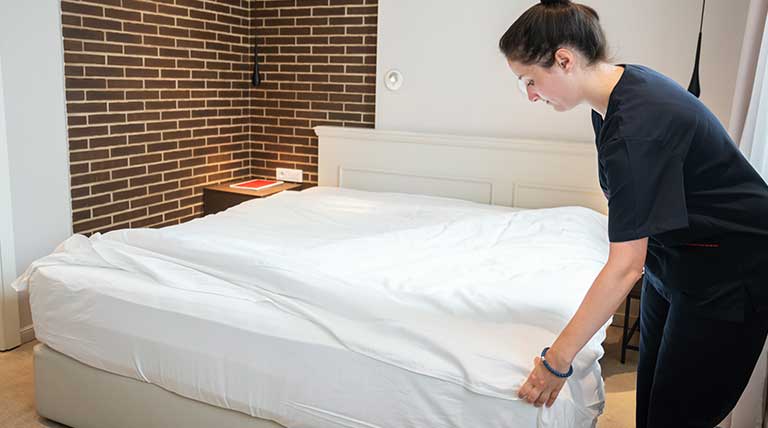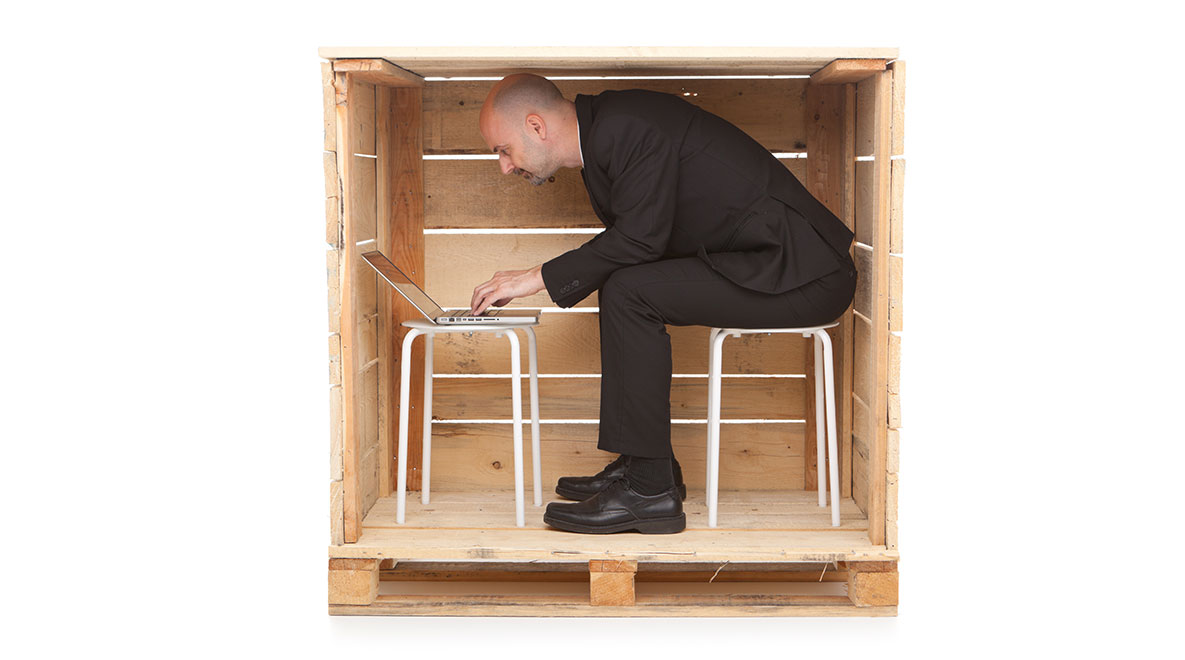The boomers are coming to your senior care facility
Will you have the staff you need?
- One of the biggest challenges currently faced by senior care communities is employee retention.
- Transform your just-in-case learning to just-in-time learning with documents readily accessible from training to regular work.
- Providing tools for procedural work frees your staff to focus their attention on what’s really important — the individual needs of residents.

If you work in the senior living industry, you’re no doubt familiar with the coming wave of baby-boomers who will begin entering post-retirement care within the next several years. Some estimates put the number at over 76 million by 2025.1
That means the senior care profession will need 2.3 million more care providers for that population.2 And with a new proposal from the Biden administration, that number could be even greater. Under Biden’s plan, most of the nation’s nursing homes would be required to increase staffing – many, quite significantly.
The proposal would make three primary revisions to current rules:
- A Registered Nurse (RN) must be on duty 24/7. No longer will a Licensed Practical Nurse (LPN) meet the requirement.
- RNs would need to provide 0.55 hours of care to each resident. RNs are responsible for individual care plans, monitoring changes in patient conditions, and writing orders for treatment.
- Certified Nursing Assistants (CNAs, or aides) would need to provide a daily average of 2.45 hours of care to each resident. This includes activities of daily living, like bathing, eating, and toileting.
If approved, facilities will have five years to hire more staff and meet the set requirements as they’re phased in.3

Unfortunately, one of the biggest challenges currently faced by senior care communities is employee retention.4 Employee turnover can cost anywhere from $3,000 for support staff to upwards of $20,000 for registered nurses.5 And when your experienced staff leaves, they can take a lot of important information with them.
In order to provide care for today’s senior population and those who will need care in the near future, it is critical to identify ways to recruit, onboard and retain staff more easily and affordably.
Onboarding begins with recruitment
After having spoken with dozens of leaders working in senior care, we’ve learned how it can be one of the most challenging and most rewarding careers to pursue. Whether a prospective employee works in maintenance, food service or healthcare, this isn’t like any other job they’ve ever had. It isn’t exactly hospitality and it isn’t exactly healthcare but somewhere in between.
Employees need to understand early-on that when they’re working, they’re not performing tasks, they are providing freedom from physical limitation and relief from loneliness. All staff need to be prepared to be held accountable to take responsibility for a problem that arises in their presence and know how to get to a resolution.6
Because most people entering this line of work won’t have that understanding coming in, a solid onboarding process is an important first step in improving retention. “Industry watchers say the high turnover rate in senior living tracks directly back to the hiring process, especially those early days in which a new worker gets familiar with the senior living environment.”6
So, it’s never too early to begin this conversation with prospective employees.
Training will stick if it’s repeatable

When you’re developing onboarding and training processes, try to establish a standard that can be repeated and revised uniformly. This will help you make incremental improvements over time. If you do it right, it will also align with the way your employees learn.
On our Acadia platform, you can outline information that is unique to a particular role, as well as information that cuts across all roles such as: safety, company policies and procedures, laws and regulations.
After onboarding training, it helps to make the same documents readily accessible during regular work. This will transform your just in case learning to just in time learning. Acadia makes daily tasks and technical routines available on any mobile device, so staff can do them accurately every time.
You can also quiz employees for comprehension, and turn procedures into checklists that they can take with them as they perform their work.
Providing tools for procedural work, frees your staff to focus their attention on what’s really important — the individual needs of residents.
For auditing purposes, policies can be assigned to specific employees and can require acknowledgements that are stored in a permanent record.
Engaged staff stay longer

Employees who are in tune with changes at their company and believe they are heard by management feel more invested and develop deeper loyalty to their organization.7
Throughout the Acadia platform, we provide multiple ways for your workforce to provide feedback. When an employee comments on a policy, procedure or task, the comment is organized and sent to you so that you can act on it.
Being responsive to employee concerns and suggestions will make them more likely to provide feedback in the future. These incremental changes will also improve your overall level of service.
As every little detail is lined up, some communities have found that turnover is significantly reduced and resident satisfaction is improved.6
Sources:
- The Age of Disruption: The Reasons for Growth
- What Will The Senior Care Workforce Look Like In 2030?
- Would your nursing home meet Biden’s proposed staffing levels? Check our data to find out.
- Key Issues Outlook – Ziegler CFO Hotline – January 2018
- The Real Cost of Employee Turnover in 2021
- Reducing the Learning Curve for New Employees
- R-E-S-P-E-C-T: The Key to Employee Loyalty
Ready to crush your goals?
"*" indicates required fields


